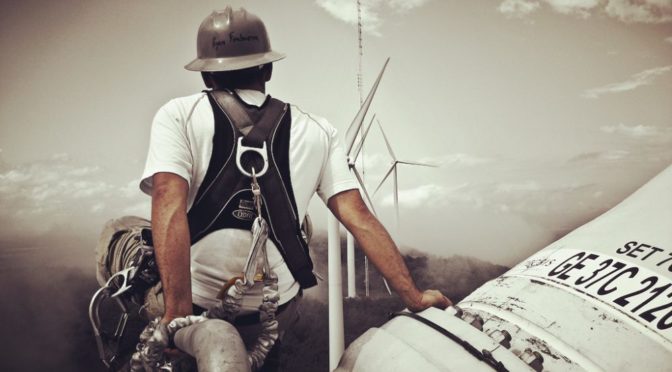It’s not often we celebrate something happening at NorthWestern Energy. However, there were two recent renewable energy developments at the utility in the last two weeks that deserve recognition — both in terms of recognizing the larger benefits of renewables over fossil fuels like coal and gas, and in reducing energy costs. In short, while voluntary efforts by the utility to meaningfully increase its renewable energy supply are still desired, there is progress worth celebrating.
First, NorthWestern signed a deal to buy energy from a new 80-megawatt wind project called South Peak, to be located east of Great Falls. As a sign of how deeply the cost of wind energy has declined, the price mutually agreed to by the utility and the wind developer was jaw-droppingly low. At $21.66 per megawatt hour (MWh), energy from this wind project will be three times cheaper for NorthWestern customers than the incredibly expensive and dirty coal-fired energy coming from Colstrip ($74/MWh). Furthermore, this wind power will be less than half the cost of energy from the existing hydroelectric dams ($56/MWh) and even cheaper than the utility’s contracts for purchases from the open energy market ($21.77/MWh). Put simply, this ultra-low-cost wind energy is a game changer, providing a glimpse at the incredible value Montana’s wind resource can provide to both in-state and out-of-state customers. And while it took a federal law to prompt this deal, hopefully the brilliant win-win bottom line result (customers saving money while enjoying more renewable energy) will help guide the utility’s decisions going forward.
Second, NorthWestern recently announced plans to purchase the 9.7-megawatt Two Dot wind project located west of Harlowton. This decision looks like it was also prompted by a legal requirement, in this case Montana’s visionary renewable portfolio standard. Regardless, bringing this project in-house for the utility is a great addition, one that recognizes the benefits of renewable energy for customers. Wind (and solar) projects burn no fuel, meaning they have no fuel costs, a feature that reduces both operating costs and exposure to volatile energy markets. Further, renewable energy projects produce no pollution, meaning they create none of the often-massive cleanup costs that fossil fuel power plants create. And while wind and solar projects require transmission lines just like fossil fuel power plants, they do not need risky and expensive new pipelines the way gas plants often do. This saves customers from having to spend money unnecessarily on new gas infrastructure, a real concern. As the utility’s own 2013 long-term resource plan explained, “Installation of significant new natural-gas fired generation anywhere in the NorthWestern service territory will likely require pipeline capacity upgrades or interruptible pipeline service with diesel fuel backup.” Wind and solar simply do not require this infrastructure.
The path forward is clear: renewable energy is the cheapest, least risk and cleanest resource for NorthWestern’s customers. The South Peak and Two Dot wind projects, no matter what prompted their acquisition, help move the utility down that path, which is progress worth celebrating. Hopefully, someday soon we’ll see the utility voluntarily acquire these kinds of low-cost, high-value renewable energy resources and the party can truly get started. We’ll gladly pop the first bottle of champagne.
BRIAN FADIE
Brian Fadie is the Clean Energy Program director at the Montana Environmental Information Center.
helenair.com

